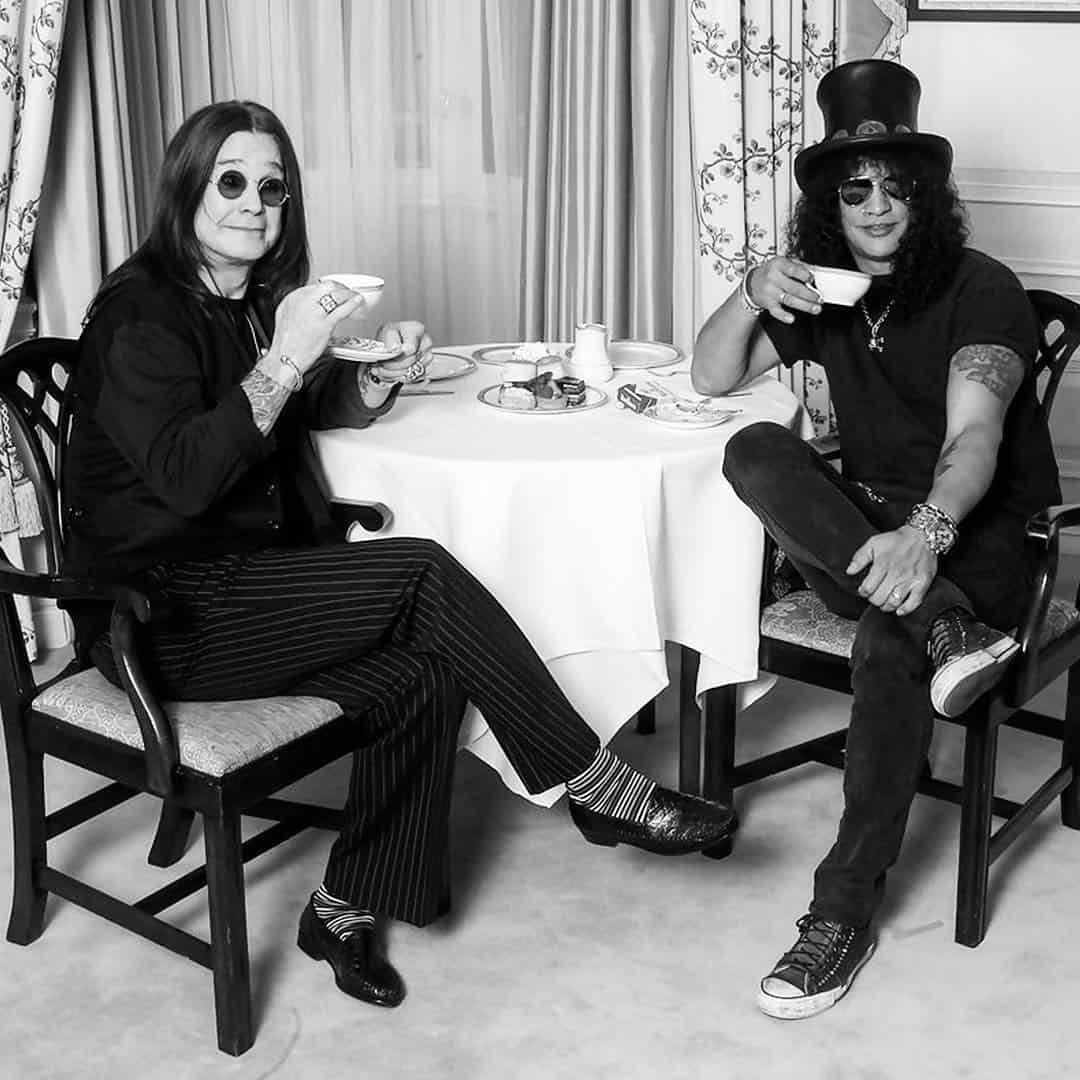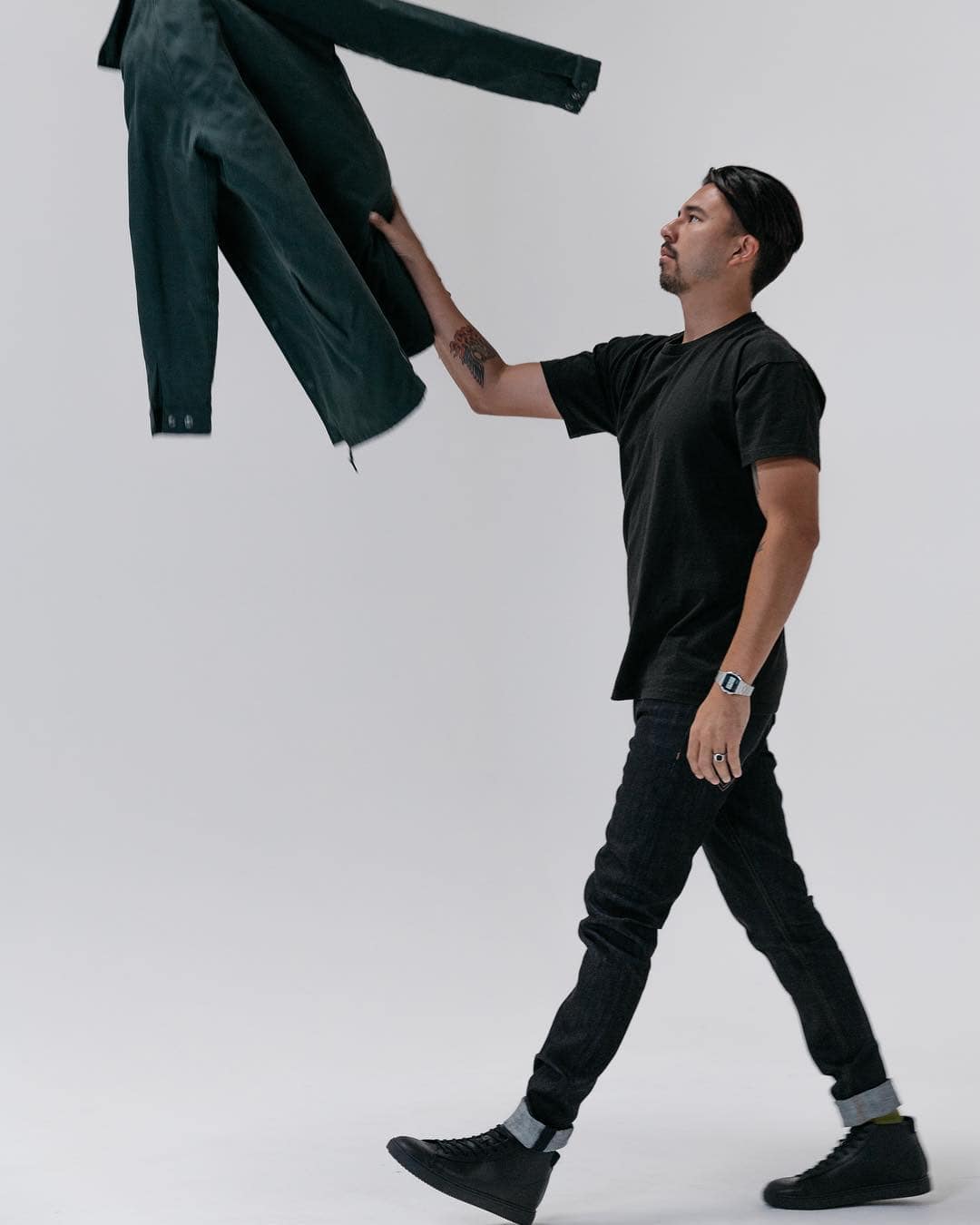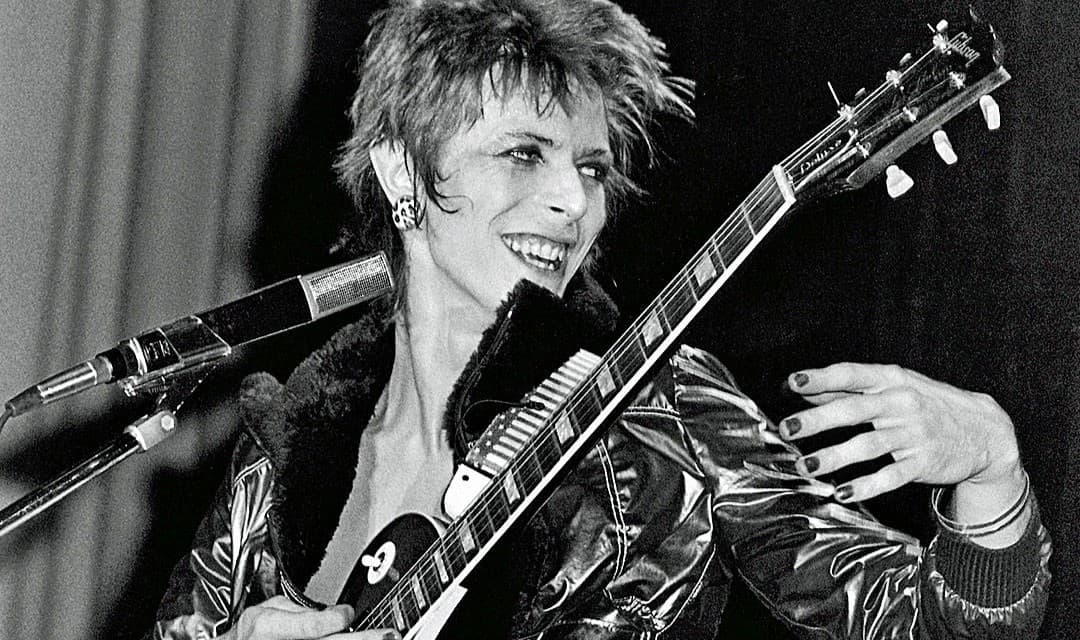Embracing rockstar style is about boldly stepping into a world where fashion meets rebellion, individuality, and unmistakable flair. This unique blend of edginess and elegance, known as rockstar fashion, transcends mere clothing choices, embodying a lifestyle that champions creativity and non-conformity.
The rockstar aesthetic is not just about what you wear; it’s a statement of personal identity, a way to express the undying spirit of rock ‘n’ roll through every stitch and accessory. It’s an attitude.
Whether you’re aiming to capture the gritty glam of the 70s, the rebellious punk vibes of the 80s, or the laid-back indie looks of the 2000s, rockstar fashion offers an eclectic palette to craft your own version of iconic style. Keep reading to discover the evolution of rock style, plus key elements for rocker fashion, style icons, and outfit ideas.

What Is the Rockstar Aesthetic?
The rockstar aesthetic is a visually striking and culturally rich style that embodies the rebellious spirit and individualism of rock music’s greatest icons.
It’s a blend of edginess (hey, Billy Idol!), flamboyance (Freddie Mercury, anyone?), and a touch of androgyny (Bowie, of course!), marked by an effortless cool that challenges traditional fashion norms.
This rockstar aesthetic isn’t confined to one uniform look. Instead, it evolves with the musical landscape, drawing inspiration from various genres and eras.
From the leather-clad rockers of the ’50s to the glam rock gods of the ’70s and the grunge heroes of the ’90s, the rockstar look is about making a personal statement that’s as bold and unique as the music itself.

The Evolution of Rockstar Style
1950s Rock Fashion: The Birth of Cool
The 1950s heralded the dawn of the rock ‘n’ roll era, birthing a distinct aesthetic that was as compelling as the music itself. Big wigs like Elvis Presley and Johnny Cash didn’t just challenge musical norms; they upended traditional fashion with their daring style choices.
These weren’t your grandma’s celebs. Presley, with his iconic slicked-back hair, leather jackets, and denim jeans, embodied a new kind of masculine allure. This era’s fashion blended rebellion and sophistication, with leather jackets symbolizing rugged defiance and denim introducing casual wear into mainstream fashion.
The rockstar look of the ’50s was about breaking free from the conservative shackles of post-war society, setting the stage for the eclectic styles that would define rockstar fashion in the decades to come.
The 1960s: Psychedelic Experimentation
The 1960s saw the explosion of psychedelic rock, bringing with it a radical shift in fashion. Artists like Jimi Hendrix and The Beatles were at the forefront, embracing vibrant colors, intricate patterns, and fluid silhouettes that reflected the era’s spirit of freedom and experimentation.
Hendrix, in particular, became a style icon known for his flamboyant shirts, velvet jackets, and wide-brimmed hats, which added a touch of sartorial flamboyance to the rockstar persona. Who else heard rumors about the “real†reason he wore headbands?
This period was marked by a move towards more experimental, androgynous looks, challenging traditional gender norms and embracing a broader palette of styles and influences.
’70s Rock Fashion: Glam Rock and Punk
The 1970s was a decade of dualities in rockstar fashion, characterized by the polar opposite movements of glam rock and punk. With his Ziggy Stardust, Glam rock star David Bowie helped to introduce an era of theatricality and extravagance. His use of makeup, glitter, and outlandish costumes broke new ground, merging fashion with performance art.
Meanwhile, the punk movement, spearheaded by bands like The Ramones and The Sex Pistols, adopted a more minimalist, raw aesthetic. Leather jackets became more than just a style choice; they were a canvas for political and social statements, adorned with patches, studs, slogans, and as many safety pins as possible.
This juxtaposition of styles within the same decade illustrated the rockstar’s role as both a fashion icon and a cultural commentator. After all, it doesn’t really get more punk than loudly going against the norm.
’80s Rock Fashion: Hair Metal and New Wave
The 1980s was an era of excess, and rockstar fashion reflected this through the flamboyant hair metal styles and the new wave’s polished looks. Hair metal bands like Mötley Crüe and Poison embraced tight leather pants and bandanas.
They also favored, most notably, teased hair, creating an image that was as visually arresting as their music (and no doubt sending hairspray stocks through the roof).
On the other side of the spectrum, the new wave movement offered a cleaner, more stylized approach. Bands like Duran Duran and Depeche Mode brought a sense of sartorial elegance to rockstar fashion.
Bands like these incorporated tailored suits, strategic use of color, and a blend of traditional and futuristic elements, illustrating the genre’s broader cultural influences and aesthetic aspirations.
1990s Rock Fashion to Present: Grunge to Indie
The transition from the 1980s to the 1990s saw a dramatic shift with the advent of grunge, led by bands like Nirvana, Pearl Jam, and Soundgarden. This movement traded in the overt flamboyance of the previous decade for a more understated, accessible look.
Flannel shirts, distressed denim, and combat boots became the era’s uniform, reflecting grunge’s roots in punk’s anti-establishment ethos but with a more laid-back, nihilistic twist.
In the years since, the rockstar aesthetic has continued to evolve, absorbing influences from indie, electronic, and hip-hop styles yet always maintaining that core element of rebellion and distinctiveness.
Today’s rockstar fashion is a mosaic of historical influences, embodying the spirit of innovation and defiance that has always been at the heart of rock ‘n’ roll.

Key Components of Rockstar Fashion for Men
Leather Jackets: The Quintessential Rockstar Piece
The leather jacket is the quintessential emblem of rockstar fashion, a symbol of rebellion that has transcended decades. Its origins as a piece of functional motorcycle wear were transformed in the 1950s and 1960s into a staple of the rock ‘n’ roll wardrobe, thanks in part to icons like James Dean and, later, the punk movement.
This garment’s evolution from the clean lines of the ’50s biker jacket to the studded, patched, and personalized versions of the ’70s and ’80s punk era speaks volumes of its versatility and enduring appeal.
Designers and musicians alike have continued to innovate, introducing variations in color, cut, and texture, but the leather jacket’s core association with the rockstar aesthetic remains unchanged.
The leather jacket symbolizes the ultimate blend of toughness, edginess, and coolness, making it a perennial favorite among rock icons and their fans. In idolizing the rockstar aesthetic, you can never go wrong with a good leather jacket.
Skinny Jeans: A Silhouette Staple
Skinny jeans have carved out their place in rockstar fashion history, closely associated with the slim silhouettes of the 1960s and 1970s rock icons like The Rolling Stones and The Beatles.
This revolutionary style challenged the broader, more traditional cuts of men’s trousers with a provocative and stylish look. The adoption of skinny jeans by these musicians signaled a shift towards a more androgynous aesthetic, emphasizing the body in ways that men’s fashion had previously shied away from.
Through the years, skinny jeans have remained a staple in the rockstar wardrobe, embraced by various music genres from glam rock to grunge, each time being reinterpreted to fit the era’s ethos.
Their enduring popularity lies in their ability to blend comfort, style, and a hint of rebellion. Don’t worry about what Gen Z says, skinny jeans will always be rock ‘n’ roll.
Band T-Shirts: The Voice of Rebellion
Band T-shirts are more than just casual wear; they’re a canvas for self-expression and allegiance within the rockstar aesthetic. These started out in the 1940s when young Bobby Soxers were scribbling their favorite bands’ names on blank tees. By the ’50s, the demand was noted, and production began.
The imagery and logos featured on these tees often reflect the band’s aesthetic and message, from the iconic Rolling Stones tongue logo to the provocative designs of punk bands.
Beyond their role as merchandise, band T-shirts have been elevated to fashion statements, often worn under leather jackets or alone, paired with skinny jeans, to create a look that’s both effortless and edgy.
Statement Accessories: Personalizing the Rockstar Aesthetic
Here’s where you can really stand out. Accessories play a crucial role in personalizing the rockstar aesthetic. Items such as wide-brimmed hats, sunglasses, and scarves have been popularized by icons like Jimi Hendrix and Keith Richards, adding layers of mystique and individuality to their looks.
Jewelry, too, from chunky rings to layered necklaces, has become synonymous with rockstar style, each piece adding a touch of flamboyance or grit.
These accessories are not mere embellishments; they are integral to the rockstar persona, offering a way to distinguish oneself and add depth to the rebellious spirit that defines rockstar fashion. Just don’t go sticking dirty paper clips on your ears, sorry mom!
Boots: The Foundation of Rockstar Style
London’s Calling, and it wants to talk about shoes. Footwear, especially boots, has always been a cornerstone of the rockstar aesthetic. From the Chelsea boots of the British Invasion to the combat boots of the grunge era, the choice of footwear adds a finishing touch to the rockstar look.
These boots, often worn and distressed, symbolize the rockstar’s journey�both literally and metaphorically. They offer a blend of style and practicality, with their durability and comfort making them suitable for the demands of live performances.
Whether sleek and polished or rugged and worn, boots anchor the rockstar’s attire, grounding their often flamboyant ensembles with a sense of authenticity and rugged charm.

Types of Rockstar Fashion
Punk Rock Fashion
Punk rock fashion is synonymous with rebellion and anti-establishment sentiments. Characterized by its DIY ethos, punk fashion includes ripped jeans, band tees, leather jackets often adorned with patches and studs, and combat boots.
Accessories � think spiked bracelets, chokers, and safety pins � are not just adornments but symbols of punk’s raw, confrontational attitude. This style emerged in the late 1960s, heavily influenced by bands like The Sex Pistols and The Ramones, whose members embodied the punk aesthetic both on stage and off.
Punk fashion challenges societal norms and expresses a loud, unapologetic identity through its distinctive, edgy look.
Glam Rock Fashion
Glam rock fashion, which rose to prominence in the early 1970s, is all about theatrics, flamboyance, and androgyny. Influenced by artists like David Bowie, Marc Bolan, and Freddie Mercury, glam rock fashion features glitter, sequins, platform shoes, and tight, flamboyant outfits that blur gender lines.
Makeup plays a significant role in this style, with performers donning elaborate eyeshadow, lipstick, and face paint to enhance their otherworldly personas. Glam rock fashion is a celebration of excess and fantasy, pushing the boundaries of traditional menswear and offering a stark contrast to the minimalist ethos of punk.
Indie Rock Fashion
Indie rock fashion is characterized by its understated, nonchalant approach, reflecting the genre’s independent roots and emphasis on authenticity. This style incorporates vintage tees, skinny jeans, cardigans, and casual footwear like sneakers or desert boots.
Indie rock fashion is often seen as a blend of retro and contemporary elements, focusing on comfort and a slightly disheveled look that suggests a cool detachment. Bands like The Strokes and Arctic Monkeys have exemplified indie rock style, showcasing how simplicity and subtlety can also make a strong fashion statement.
Alt Rock Fashion
Alternative rock fashion encompasses various styles, reflecting the genre’s diverse musical influences. From the grunge-inspired flannel shirts and distressed denim of the early ’90s to the more polished, eclectic looks of bands like Radiohead and Muse, alt-rock fashion is versatile and individualistic.
It often borrows elements from punk, goth, and other subcultures, creating a unique blend that defies easy categorization. Key to alt-rock fashion is a sense of personal expression, with musicians and fans alike mixing different styles to create looks that are both edgy and approachable.
Yacht Rock Fashion
Yacht rock fashion draws inspiration from the soft rock of the late ’70s and early ’80s, characterized by its laid-back, polished aesthetic. This style includes light, breezy fabrics, pastel colors, boat shoes, and nautical-themed accessories, reflecting the music’s smooth, easy-listening vibe.
Think Gilligan’s Island with more blazers and longer lapels. Yacht rock fashion evokes a sense of leisure and luxury, with a preppy twist that distinguishes it from the more rebellious rock subgenres.
Artists like Hall & Oates and The Doobie Brothers, with their clean-cut looks and smooth sounds, epitomize yacht rock’s sartorial and musical ethos.
Each of these types of rockstar fashion not only reflects the music and attitude of its respective genre but also influences broader fashion trends, showcasing the enduring link between rock ‘n’ roll and style.

Rockstar Hairstyles & Grooming Trends
Rockstar hairstyles and grooming trends have always been about pushing boundaries and challenging societal norms.
Rockstar Hairstyles for Men
You didn’t think we were gonna skip the hair, did you? From the mop tops of The Beatles in the 1960s, which signaled a departure from the conservative crew cuts of the era, to the wild, teased hair of the 1980s hair metal bands, hairstyles play a pivotal role in the rockstar identity.
These looks are not just about fashion but are expressions of rebellion, creativity, and individuality.
The grunge movement brought a more unkempt, natural hairstyle to the forefront, symbolizing a rejection of the polished images of the previous decade. Today, rockstar hairstyles vary widely, embracing everything from clean-cut to wildly experimental, but the underlying theme remains the same: a refusal to conform.
Rockstar Facial Hair
Facial hair, too, has seen its trends within the rockstar world, from the carefully groomed mustaches of the 1970s to the rugged beards of the indie and folk rock scenes. These grooming choices complement the overall aesthetic, adding layers of personality and style to the rockstar’s look.

Men’s Rockstar Style Icons
David Bowie: The Chameleon
David Bowie’s impact on rockstar fashion is unparalleled. Known as much for his musical innovation as for his constantly evolving style, Bowie embraced a wide range of looks, from the androgynous glam of Ziggy Stardust to the sharp suits of the Thin White Duke.
His ability to transform himself visually was a testament to his creative genius, influencing countless designers and musicians.
Kurt Cobain: The Reluctant Icon
Kurt Cobain, the frontman of Nirvana, became an unwitting fashion icon through his grunge aesthetic. His layered flannels, vintage tees, and distressed denim defined the 90s look, embodying the era’s spirit of anti-materialism and authenticity.
Cobain’s style starkly contrasted with the glam of the ’80s, offering a more accessible, down-to-earth approach to rockstar fashion.
Mick Jagger: The Enduring Showman
Mick Jagger’s style has evolved through the decades, yet he remains an enduring symbol of rockstar fashion. Known for his flamboyant stage outfits and keen fashion sense, Jagger has always blended the lines between masculine and feminine dressing, embracing bright colors, tight fits, and luxurious fabrics.
His dynamic presence and fashion choices continue to influence the rockstar aesthetic.

Rockstar Outfits for Men: How to Wear the Rockstar Aesthetic
Embodying the rockstar aesthetic is about blending classic elements with personal flair. Start with foundational pieces like a well-fitted leather jacket and skinny jeans, then layer with band tees or vintage shirts to nod to musical influences.
Accessories are your opportunity to personalize�think statement belts, layered jewelry, and distinctive footwear like Chelsea or combat boots. The key is to mix textures and styles, combining rough with smooth and vintage with modern, to create a look that’s uniquely yours.
Remember, the rockstar aesthetic is as much about attitude as it is about fashion, so wear it with confidence.
Final Verdict
The rockstar aesthetic is more than just a fashion statement; it’s a celebration of individuality, rebellion, and the transformative power of music. By blending iconic elements with personal touches, anyone can channel the spirit of rock ‘n’ roll’s most iconic figures.
Remember, the essence of rockstar fashion lies not in specific pieces but in the attitude with which you wear them. Embrace your inner rockstar, and let your style sing.
FAQ
-
-
To dress like a rockstar, incorporate key pieces like leather jackets, skinny jeans, band t-shirts, and statement accessories into your wardrobe. Embrace a mix of edgy and flamboyant elements and confidently carry the ensemble.
-
Leather jackets, distressed denim, band tees, boots, and an assortment of bold accessories like studded belts and chunky jewelry define rocker style. It embodies a rebellious, non-conformist attitude.
-
Rock stars often wear statement clothing, including leather jackets, vintage band tees, skinny jeans, and custom pieces with unique patterns or embellishments that stand out on stage.
-
Rock stars typically favor bold and distinctive jewelry, such as layered necklaces, large rings, bracelets, and earrings, often featuring skulls, crosses, or other edgy motifs.
-
Rockstars frequently opt for skinny jeans or leather pants, chosen for their sleek silhouette and edgy vibe. These pants allow for ease of movement while performing and a visually striking look.
-
Read the original article here


